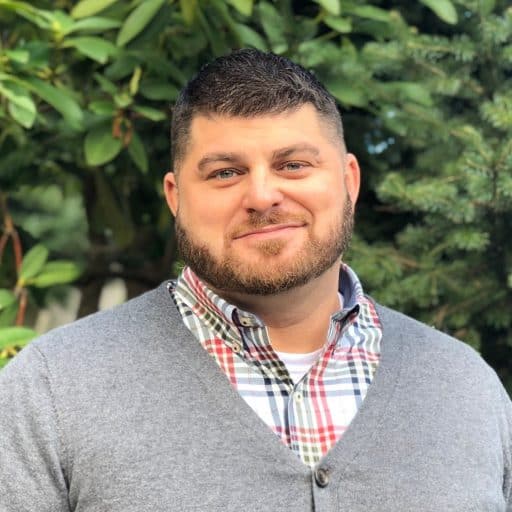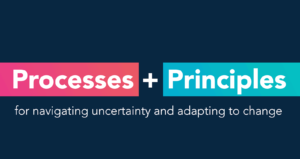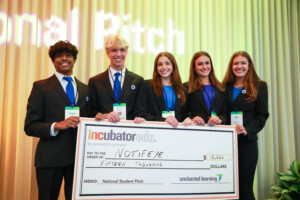The Road to Solutions

We here at Getting Smart spend a great deal of time implementing and coaching design thinking, both internally and externally. Our process typically revolves around navigating and mitigating a variety of roadblocks or, in really fun scenarios, eliminating barriers altogether with an unwavering belief in the outcomes achieved through delivering solutions.
Over the last month, our family vehicle has been having issues. The battery died once. We gave it a jump, and didn’t think about it again. Two weeks later, it would not start again. This time, we created an elaborate rationale to justify why it had died, which included some fairly out-there possibilities that we somehow accepted as a reasonable rationale for why it had died, hoping that these explanations would save time and money by saving a trip to the shop. Can you guess what happened last week? The battery died. We took it in, had it tested and found out the battery was no longer good. We purchased a new battery and have not had a problem since.
This experience provided me with three lessons that I believe are relevant to educators, students and parents across the country as they prepare to return to school and continue their learning road trip.
- It’s okay to not know everything; solicit support.
- When something needs to be solved, solve it.
- This solution process can be fun, if you allow it to be.
It’s okay to not know everything; solicit support.
In this scenario, part of the justification for not creating a solution was a persistent denial of the problem. Most likely motivated by money and time, there are a plethora of deflective reasons to apply when trying to avoid the creation of a needed solution. I am not skilled in the art and science of auto mechanics, which would have allowed me to accurately assess the “health” of our battery, nor am I an electrical engineer (one of our excuses was that the car’s security feature killed the battery based on the ignition being left on for a couple of minutes). With a trip to the auto parts store, the mechanics could have utilized skills and tools to quickly assess our scenario and become members of Team Kulaas who were able to apply a solution.
As you start the year, in whatever role fits you, ask for support. As teachers, take the opportunity to collaborate with a colleague around something that they do that you would like to learn. Whether it is a classroom management routine, instructional practice or just general commitment to checking in around becoming a better teacher, have confidence in the vulnerability associated with the art of learning to teach, without a ceiling of improvement.
As students and parents, have the courage to ask clarifying questions about anything that is unclear. The first couple of weeks are crucial to setting the stage for a successful school year. Whether you have attended the same school for years or you are making a big transition, know that your learning community is there for you and in it together. Don’t know where the restroom is? Ask. Don’t know where your bus picks up? Ask. Not sure of the expectations within class? Please ask. Staff in every building want you to be the best possible you, and it starts and ends with providing you opportunities to own your educational experience. As a former principal, I suggest providing an open invite from every principal to parents and teachers to set up a time to say hello and ask questions about any aspect of the community that you are part of. Your partnership and the conversations that are attached to the relationship of raising and educating kids together is one of the highlights of each day.
When something needs to be solved, solve it.
In this battery dying fiasco, we lost a great deal of time and exerted energies that could have been spent on more enjoyable activities. We traded what ended up being 15 minutes (once we sought assistance) for a great deal of headache and frustration (not to mention time and energy). When something needs to be solved, solve it. This expanded breakdown could stop right here, but would deprive the growth opportunity in sharing this experience. In every role of a community, there are never shortages of things that could benefit from solutions. Some are systems pieces that are easy to ignore as, “too difficult,” while others are within your immediate control and ignored through a very safe, “that only impacts me” mentality.
Either scenario–and everything in between–can be filed under the following statement: solutions bring change and change brings unknown’s. Every solution, “good” or “bad,” creates a change–and there are always unknowns that have a tendency to create fear.
That being said, it is now time to do something that I share with my own kids: owning the good to conquer the bad. Think of the various solutions you have created and then look at the good that came from those solutions. Perhaps the solution streamlined a process, provided freedom of time through increased efficiency or my favorite, a student benefited from the solution that you created to better their existence in any aspect of life. Find peace in a half-full mentality when designing solutions, and confidence as you deliver them with the intent of bettering life (for you or others).
The solution process can be fun, if you allow it to be.
I was content to stop at 2 insights until my 6-year-old delivered a really neat light bulb moment. We had replaced our battery, but over the course of it dying a few different times, my 6-year-old was in the car. He is a creative boy and very conscious of the world around him. Nearly in tears after the first time it didn’t start, he was worried that we would be stranded and, because he had not faced it before, was scared of many unknowns.
But the adventure did not stop there. With each non-start, you could visually see his anxiety transform into frustration and eventual anger around the continued problem. After the final dead battery, he asked to go to the auto parts store while they supported us with the problem. As with everything, he watched with curious eyes as they tested various components and parts and studied the actions of these experts and their tools. Once assessed, he continued to watch as we replaced the battery and became relaxed in the fact that it was replaced and would no longer be an issue.
 Several days after the replacement, as we were driving I heard from the back seat, “Dad? What if we made a jumper cable that came out of your keys and attached to your battery to make the car start? We could call them “Jumpies.” While I responded immediately, it felt like I processed his simple and yet very complex statement for days. I was internally celebrating his creativity and pondering the actual creation of such a tool. While I pride myself on living outside of the box, with vulnerable honesty, I also, for a brief moment, thought about all of the reasons that it couldn’t be done. Thankful for an ingrained “yes if” philosophy on life, we went deeper with the conversation, brought out our Smart Design Framework and dove into the creation. Whether the “Jumpie” ever sees a store shelf, has an infomercial or is funded on Shark Tank is irrelevant. It is the process and the belief in creating solutions that will inspire his courage to dream, design and deliver the next Jumpie and Jumpie after that.
Several days after the replacement, as we were driving I heard from the back seat, “Dad? What if we made a jumper cable that came out of your keys and attached to your battery to make the car start? We could call them “Jumpies.” While I responded immediately, it felt like I processed his simple and yet very complex statement for days. I was internally celebrating his creativity and pondering the actual creation of such a tool. While I pride myself on living outside of the box, with vulnerable honesty, I also, for a brief moment, thought about all of the reasons that it couldn’t be done. Thankful for an ingrained “yes if” philosophy on life, we went deeper with the conversation, brought out our Smart Design Framework and dove into the creation. Whether the “Jumpie” ever sees a store shelf, has an infomercial or is funded on Shark Tank is irrelevant. It is the process and the belief in creating solutions that will inspire his courage to dream, design and deliver the next Jumpie and Jumpie after that.
We need solutions and need our youth to be armed with the skills and confidence to create them. Through this pretty routine scenario, the design thinking correlations remind of the power we have as adults in molding the minds of learners, young and old, in environments that extend well beyond the classroom. It is a gift to set individuals up for success in creating solutions and then respectfully getting out of the way. We must be intentional in this process, solicit support, be brave, and have fun while ideating. With the variety of solutions needed in our world, there is one shared absolute. They will not solve themselves.
At Getting Smart Services, one of our greatest collaborative skill sets is utilizing our Smart Design Framework to create personalized solutions. With a foundation of maximizing the knowledge that is in the room, we become part of your community and deliver the tools and mindset for transformational change. If you are looking for a deeper learning partner to support your organization’s road trip to solutions, contact Adam Kulaas, Director of Coaching and Design at [email protected].
For more, see:
- Building the Future: Designing With Purpose
- Rethinking Middle School with Design Thinking at Vista Innovation & Design…
- Ask and You Shall Receive: The Absolute Power of a Question
- Design Thinking: Teaching the Importance of Empathy in Business
Stay in-the-know with all things EdTech and innovations in learning by signing up to receive the weekly Smart Update.






0 Comments
Leave a Comment
Your email address will not be published. All fields are required.